Tips And Tricks On Creating Amazing Aquascapes: By Veganbrian
Being a artist for fun and profession, I see things different than most people. I decided to create a article about composition, balance, color, and depth within your reef aquarium. I really hope this can help some of you out to create your dream looking reef that is pictured in your head. Once you have your tank in front of you with your rock, most people tend to blank out and just throw the aquascape together with little to no thought. When you search through the internet looking at the amazing reefs that you only dream of having, there’s one thing they have in common. Composition, balance, color, and depth. If you think you’re not capable of pulling off this effect in your tank, you are wrong. Once you understand the basics it will come natural to you. I have never written a article or done anything like this, so bear with me.
Lets focus on your Rock work first. The first thing that you see, but do not notice in pictures of your dream reef, is the placement of the rocks and exactly why it is so appealing to you. Well, For the most part it’s a simple answer really. The rule of thirds. The rule of thirds is a compositional technique for making art more interesting and dynamic. This does apply to reef aquascaping also. Look at your reef as a piece of living art. Take your time with this process and really plan it out. Your goal here is to not center your main structures. Picture a tic tac toe board.
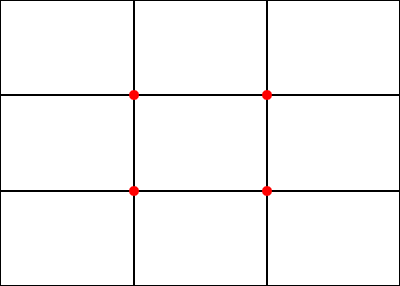
There’s 4 points where the lines intersect with each other. Your goal is to hit those points. You want the overall look to be off center to throw the viewers eyes all over instead of just right in the middle.
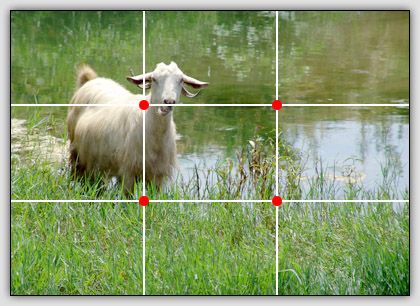
The way i see that works best for this is having one rock hit the upper right point and a smaller structure hitting the bottom left. You can place your plates, brains or small rock works in the middle just slighting off center. This creates a balanced reef.
Next is the rocks themselves. One thing i see people do a lot is just buy a big rock and put it in the tank. There’s no thought in that and it does not create a natural feel and takes away from the movement and shape or the rock. Why are mountains so amazing to us? Its because they are not a big slab of rock. They have all sorts of movement and depth. Things like points, divots, Certain lines or trees,caves, snow and running water.
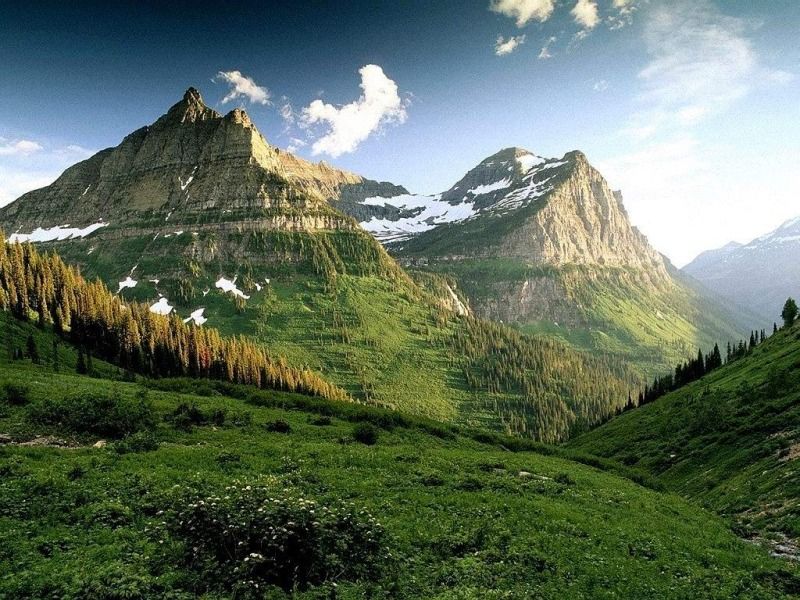
Its throws our eyes all over of place and that is what the human mind finds attractive. Make sure to incorporate all sorts of movement in your rocks. One thing that will help it to picture the rock structure as a silhouette. If it’s just this big round blob that’s not that appealing then you should change it up.Think about how you want your rock to be shaped and do not go with what you bought. Buy some main pieces and some smaller or one to break up with a hammer and epoxy to adhere them together. I think that dry rock is great for this because you can take your sweet old time with no die off to worry about. Dry scape your rock till you are happy. If you do consider all live rock, then look at the rock and make sure it’s not filled up with a bunch of random colors try to find more solid colored rock filled with coraline algae or another plain solid color. It will make your scape look confusing and your coral will be hard to find in the overall scape. Make sure to take a lot of pictures in case you created a scape that you loved but tried something else then you forgot what it was and how it looked before! If you are uncertain of your scape you can always post the pictures on a forum and see what others think. Constructive criticism is a artists greatest tool. You get a chance to see things from other peoples views.
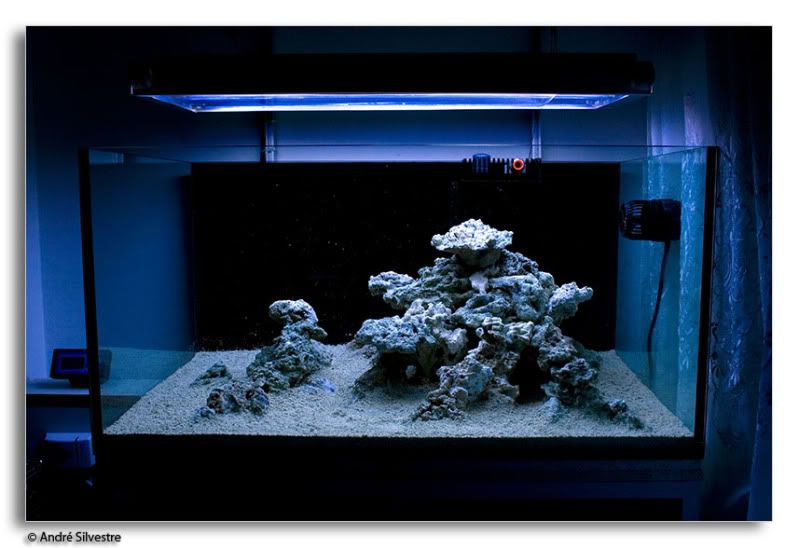
Great example of all the tips for aquascaping i’ve shared.
Depth of field is a photography term but applies to your reef tank. To explain DOF (depth of field) lets go back to basic art class. DOF is created by having a foreground, mid,and background within a design.
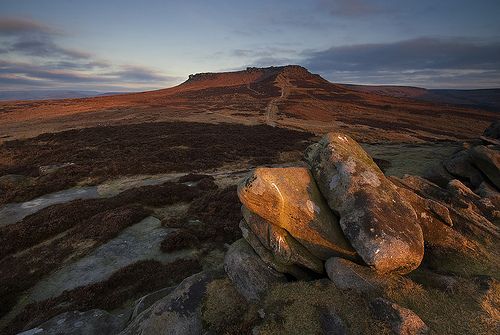
What you mainly want to achieve is to have a main rock structure and push it more towards the back of the tank. In my opinion, it’s always good to leave room behind the rock so you can clean the glass especially on clear background tanks. Build off that main structure. Add a peak and have it slope down. Go from big to small and moving the rocks closer to the front. You do not want a straight line or bigger to smaller rocks though. Again you want it to look composed. Make it have a slight curve towards the center of to tank. You can have one big rock work towards the back and have a medium on the opposite side of the thirds point, having the medium rock more center/foreword. Congratulations, you just created DOF! I like to have some small rocks almost right up the the front of the glass. When all is said and done you should have a back ground structure, a mid (whether it be a coral or a medium rock) to the Forward structure. You need to make sure your going from big to small going from the back to front. I hope that makes sense.
Another thing to add is to keep in mind your lighting and how that will hit onto your rock work. The taller the rock work the more light will hit it and the brighter it will be. Light will become important when the reef is started up. Consider that within your aquascape.
Once you have your aquascape done, then what? The rock work needs to have flow and correct composition of color introduced. Coral placement is just as important, if not more important then rock work. You need to throw the viewers eye where you want it. One big thing to remember is you do not want a group of green, a group of red and, a group of blue. You have to pretend you cannot touch the same color together. If you have two red coral then place one of the far left and on on the right. The trick is to throw the color throughout the tank. That is one rule for contrast and composition. One thing also is keep in mind where you want the viewers eye to gravitate. Keep that coral more alone and make sure to not have it clash with other colors. Having a bright red coral, surrounded by blue coral will make that coral pop and draw your eye to it. If you want to get very technical as if you were painting you can look at a color wheel.

Look at the complimentary colors. Yellow will pop the most in purple, green in red ,and blue in orange. having those colors next to each other will draw the viewer into that section of color.
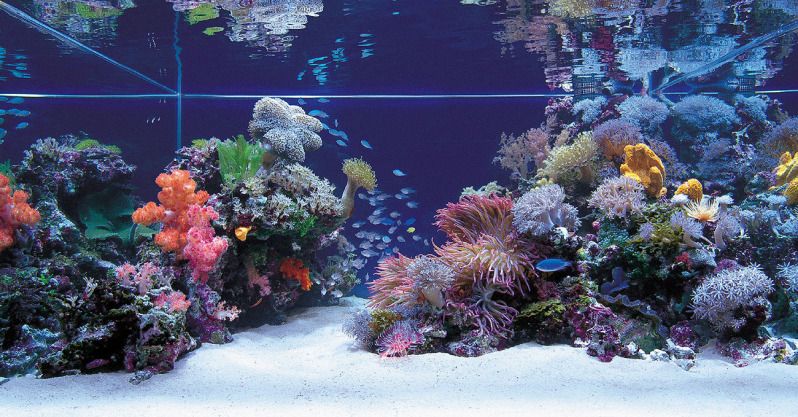
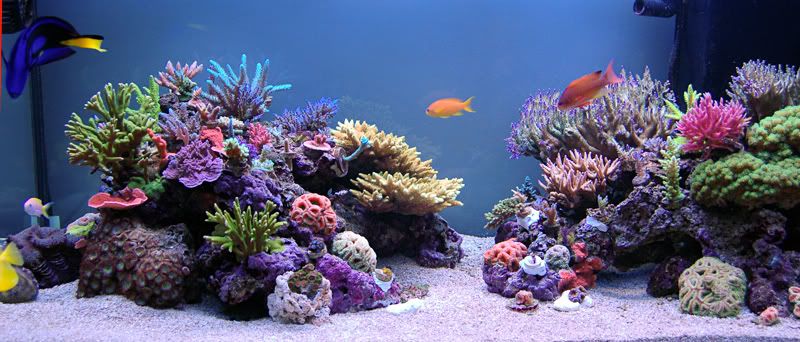

Keep in mind your space within the reef. Make sure to have equal positive and negative space, unless you want to go with the minimalist approach. Then do about 35% positive (rocks, corals) and 60% negative ( open swimming space)
There’s no how to on aquascaping but there’s lots of tips and tricks. Some people may not agree with my views and prefer other methods of “rockwall” or piling rocks into the thank and that is fine. It’s all opinion based and not everyone likes the same stuff and that’s perfectly fine. I DO NOT own the pictures provided or claim them to be mine. They are used to provide examples of what i am explaining. I hope this write up has helped someone and my countless hours of studying art paid off.
I firmly believe that the same rules apply to any size tank. The only difference is going to be scale. Instead of huge rocks break them up to create a smaller version of the beautiful reef tanks you see. There’s other things to try to still get that “look” In a cube the issue is there’s not enough length to do multiple structures. That’s when you only do one. Rule of thirds still applies but only use one intersected point instead of two.
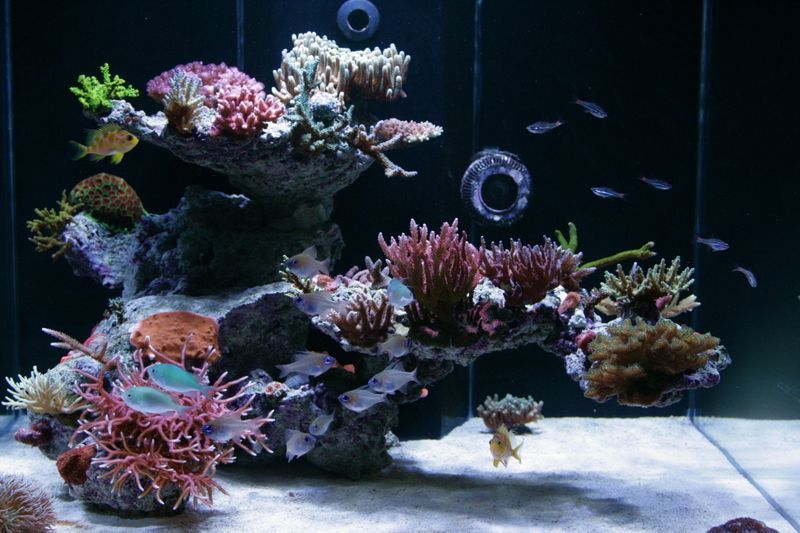

Leave a Reply
You must be logged in to post a comment.